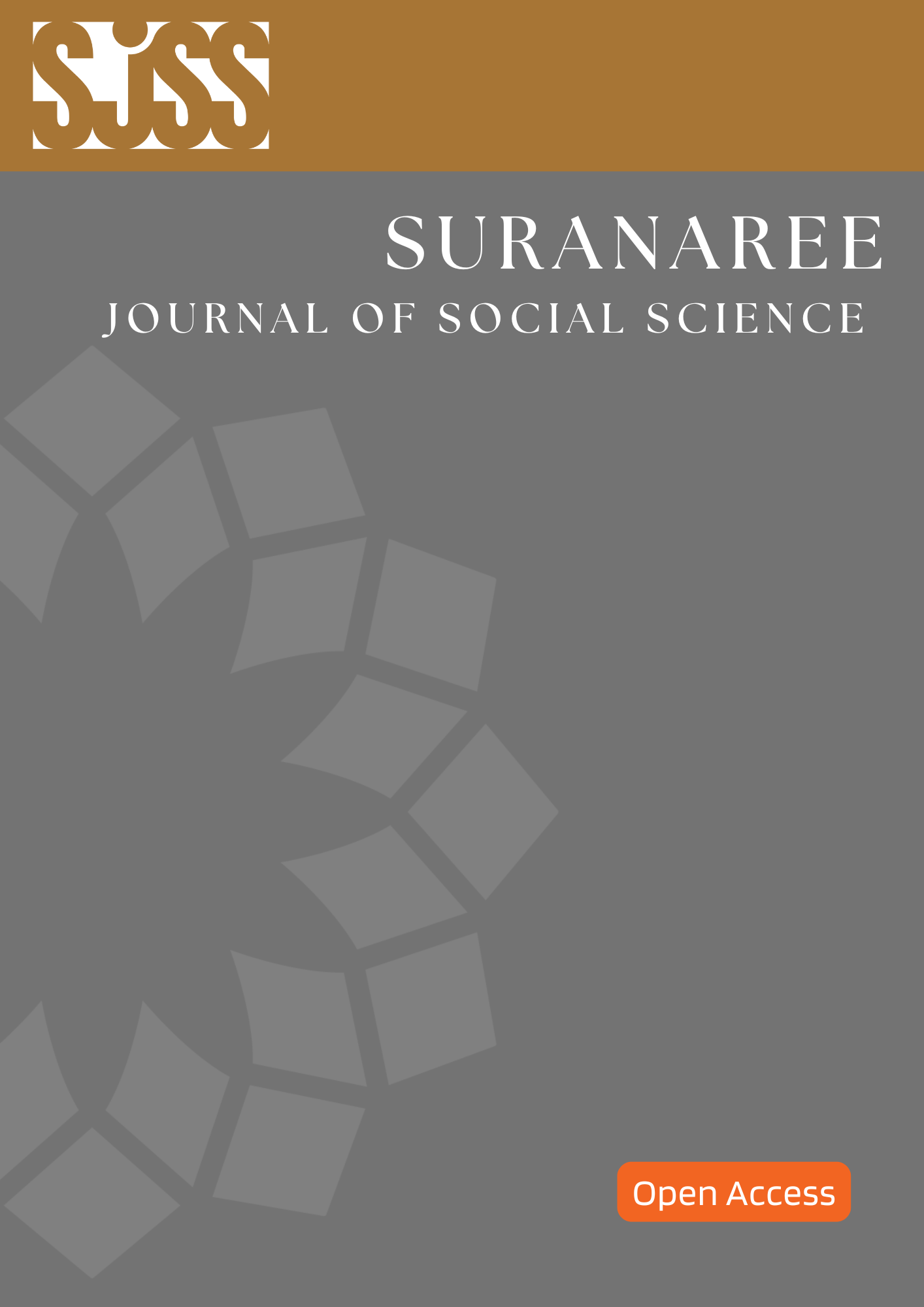Usage a Blended Learning Model to Promote the Career of Thai Massage for Health for Adult Students
Main Article Content
Abstract
This research aimed to study the implementation of a blended learning model for career promotion of Thai massage for health for adult students. The research samples comprised 34 adult students of Traditional Medical Clinic at Sirindhorn College of Public Health, Chonburi, selected by purposive sampling. The research tools were 1) a blended learning model for career promotion of Thai massage for health for adult students and 2) tools to study the outcome of implementing a blended learning model, including (1) a test on Thai massage for health, (2) an evaluation form on Thai massage for health skills, (3) an observation form of learners’ participation in learning activities through the learning model, and (4) a satisfaction assessment form. The data were analyzed using dependent sample t-test, frequency, percentage, and standard deviation. The results of the research were as follows: 1) the comparison of knowledge assessment in Thai massage for health of the learners showed that the mean of the post-test score after the learning activities were 0.05 percent significantly higher than that of the pre-test score, 2) the evaluation of Thai massage practice skills showed that learners can practice at the most correct level (90% and above) and at the correct level (80-90% and above), 3) the observation of learners participating in the activities showed that the average of the students' participation was at a high level, and 4) the sample group showed that the overall level of satisfaction was at a high level. The participants viewed that learning through the model can be further applied and promote a career at a high level.
Article Details

This work is licensed under a Creative Commons Attribution-NonCommercial-NoDerivatives 4.0 International License.
References
Al Bataineh, K. B., Banikalef, A., Abdullah, A. E., & Albashtawi, A. H. (2019). The Effect of Blended Learning on EFL Students’ Grammar Performance and Attitudes: An Investigation of Moodle. Arab World English Journal (AWEJ). 10(1): 78-88.
Allen, I. E., & Seaman, J. (2005). Growing by Degrees: Online Education in the United States, 2005. [Online]. Available: https://files.eric.ed.gov/fulltext/ED530062.pdf
Amanda R. M., Andrea L. P, & Michael E. P. (2017). Best Practices for Use of Blended Learning. American Journal of Pharmaceutical Education. 81(3): Article49. https://doi.org/10.5688/ajpe81349
Bellanca, J., & Brandt, R. (Eds.). (2010). 21 st Century Skills: Rethinking How Students Learn. Bloomington, IN: Solution Tree Press.
Bernath, R. (2012). Effectives Approaches to Blended Learning for Independent Schools. [Online]. Available: https://www.testden.com/partner/blended%20learning%20for%20independent%20schools.PDF
Bonk, C. J., & Graham, C. R. (2004). Handbook of Blended Learning: Global Perspectives. San Francisco: Pfeiffer Publishing.
Cambell DT., & Stanley JC. (1969). Experimental and Quasi-Experimental Design for Research. Boston: Houghton Mifflin.
Chareonwongsak, K. (2008). The Fifth Wave Philosopher of Society: The Expected Thai Society in 21st Century. Bangkok: Sussess Media.
Dick, W., & Carey, L. (1996). The Systematic Design of Instruction. 4th ed. New York, NY: Harper Collin
Garnham, C., & Kaleta, R. (2002). “Introduction to Hybrid Courses,” Teaching with Technology Today. 8(6). 1-4. [Online]. Available: https://hccelearning.files.wordpress.com/2010/09/introduction-to-hybrid-course1.pdf
Graham, C.R.; Allen, S., & Ure, E. (2003). Blended Learning Environments: A Review of the Research Literature. Unpublished Manuscript, Provo, UT.
Jessadangkul na Ayutthaya, P., & Thepnuan N. (2019). The Development of Online Training Package on Relaxing Massage for Working People in Patum Thani province. Journal of Educational Review Faculty of Education in MCU. 6(2): 82-92. [Online]. Available: https://so02.tci-thaijo.org/index.php/EDMCU/article/view/196222
Martha, C. (2018). Guide to Blended Learning. Commonwealth of learning; British Columbia.
Martin, J. (2010). The Meaning of the 21st Century. Bangkok: L. T. P.
Nadler, A. (1998). Relationship, Esteem, And Achievement Perspectives on Autonomous and Dependent Help Seeking. In S. A. Karabenick (Ed.), Strategic Help Seeking: Implications for Learning and Teaching (pp. 61-93). Mahwah, NJ, US: Lawrence Erlbaum Associates Publishers.
Nittayanggoon, S., & Anurat, T. (2015). The Study of Personnel Development Requirements on Thai Traditional Medicine and Alternative medicine. Journal of Nursing and Education. 8(1): 41-57.
Oliver, M., & Trigwell, K. (2005). Can ‘Blended Learning’ Be Redeemed? e-Learning. 2(1): 17-26. https://doi.org/10.2304/elea.2005.2.1.17
Panich, V. (2015). Innovative Pathway of Learning in 21st century. Walailak Journal of Learning Innovations. 1(2): 3-14. [Online]. Available: https://so03.tci-thaijo.org/index.php/jliwu/article/view/95054
Rasheed, A. R., Amirrudin K, & Nor, A. A. (2020). Challenges in the Online Component of Blended Learning: A Systematic Review. Computers & Education. 144: 1-17. https://doi.org/10.1016/j.compedu.2019.103701
Seels, B. (1997). The Relationship of Media and ISD Theory: The Unrealized Promise of Dale's Cone of Experience. Presented at Selected Research and Development Presentations at the 1996 National Convention of the Association for Educational Communications and Technology 1997. [Online]. Available: https://www.learntechlib.org/p/81879/
Spiro, R. J., Feltovich, P. J., Jacobson, M., & Coulson, R. L. (1991) Cognitive Flexibility, Constructivism, and Hypertext: Advanced Knowledge Acquisition in Ill-Structured Domains. Educational Technology. 31(5): 24-33.
Srichantra, T. (2018). Development of Instructional Systems for Foot Reflexology Career and Technology Group for High School Teachers Srakaew Province. Journal of Industrial Education Faculty of Education, Srinakharinwirot University. 12(1): 204-213.
Unthavatanapaibul, K., Vongyuttakrai, P. & Taewattan, T. (2015). Development of Promotion Career Model Related to Sufficiency Economy Philosophy. Journal of Industrial Education Faculty of Education, Srinakharinwirot University. 9(1): 34-45.


